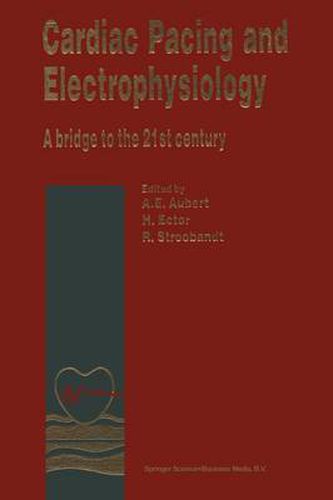Readings Newsletter
Become a Readings Member to make your shopping experience even easier.
Sign in or sign up for free!
You’re not far away from qualifying for FREE standard shipping within Australia
You’ve qualified for FREE standard shipping within Australia
The cart is loading…






This title is printed to order. This book may have been self-published. If so, we cannot guarantee the quality of the content. In the main most books will have gone through the editing process however some may not. We therefore suggest that you be aware of this before ordering this book. If in doubt check either the author or publisher’s details as we are unable to accept any returns unless they are faulty. Please contact us if you have any questions.
In 1992, clinical cardiac electrophysiology became a recognized sub-speciality of the American Board of Internal Medicine. The formal recognition of this highly specialized and technical field of medicine represents the culmination of thirty years of remarkable scientific and intellectual discovery. Beginning in the 1950s, cardiologists realized that cardiac arrhythmias were the cause of significant morbidity and the sudden death of at least 350,000 patients every year in the United States alone. At that time the only tools available for analyzing abnormal heart rhythms were the standard EKG machine and careful deductive reasoning. During the early 1960s, cardiac pacemakers reflected the first foray in the electrical therapy of cardiac arrhythmias. Pacemakers were first implanted in order to control syncopal episodes related to bradycardic heart rhythms. Although crude and bulky devices, their utility was immediately obvious to physicians and patients alike. The recognition that electrical signals could be recorded from inside the heart and that the heart’s rhythm could be controlled by the application of electrical energy began the era of clinical cardiac electrophysiology which was to follow. In the late 1960s and early 1970s and at the peak of the Vietnam conflict. a group of cardiologists with special training in cardiac electrophysiology were sequestered at the US Public Health Service Hospital at Staten Island.
$9.00 standard shipping within Australia
FREE standard shipping within Australia for orders over $100.00
Express & International shipping calculated at checkout
This title is printed to order. This book may have been self-published. If so, we cannot guarantee the quality of the content. In the main most books will have gone through the editing process however some may not. We therefore suggest that you be aware of this before ordering this book. If in doubt check either the author or publisher’s details as we are unable to accept any returns unless they are faulty. Please contact us if you have any questions.
In 1992, clinical cardiac electrophysiology became a recognized sub-speciality of the American Board of Internal Medicine. The formal recognition of this highly specialized and technical field of medicine represents the culmination of thirty years of remarkable scientific and intellectual discovery. Beginning in the 1950s, cardiologists realized that cardiac arrhythmias were the cause of significant morbidity and the sudden death of at least 350,000 patients every year in the United States alone. At that time the only tools available for analyzing abnormal heart rhythms were the standard EKG machine and careful deductive reasoning. During the early 1960s, cardiac pacemakers reflected the first foray in the electrical therapy of cardiac arrhythmias. Pacemakers were first implanted in order to control syncopal episodes related to bradycardic heart rhythms. Although crude and bulky devices, their utility was immediately obvious to physicians and patients alike. The recognition that electrical signals could be recorded from inside the heart and that the heart’s rhythm could be controlled by the application of electrical energy began the era of clinical cardiac electrophysiology which was to follow. In the late 1960s and early 1970s and at the peak of the Vietnam conflict. a group of cardiologists with special training in cardiac electrophysiology were sequestered at the US Public Health Service Hospital at Staten Island.